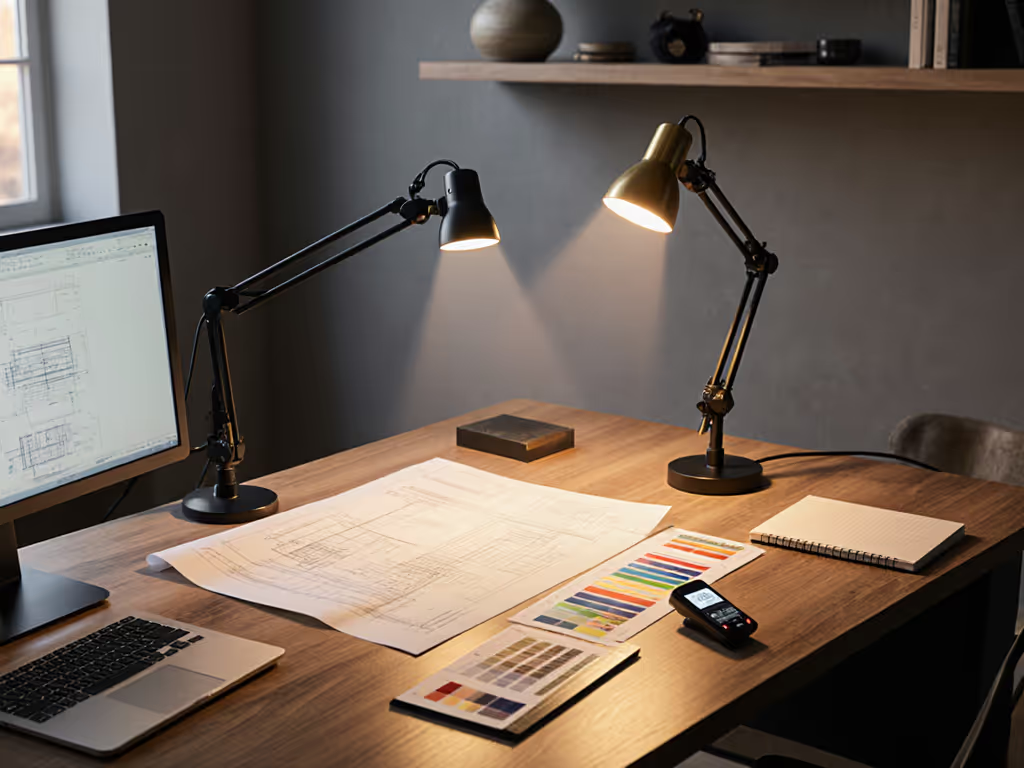
Plant-Friendly Desk Lighting: Balance Work & Plant Growth
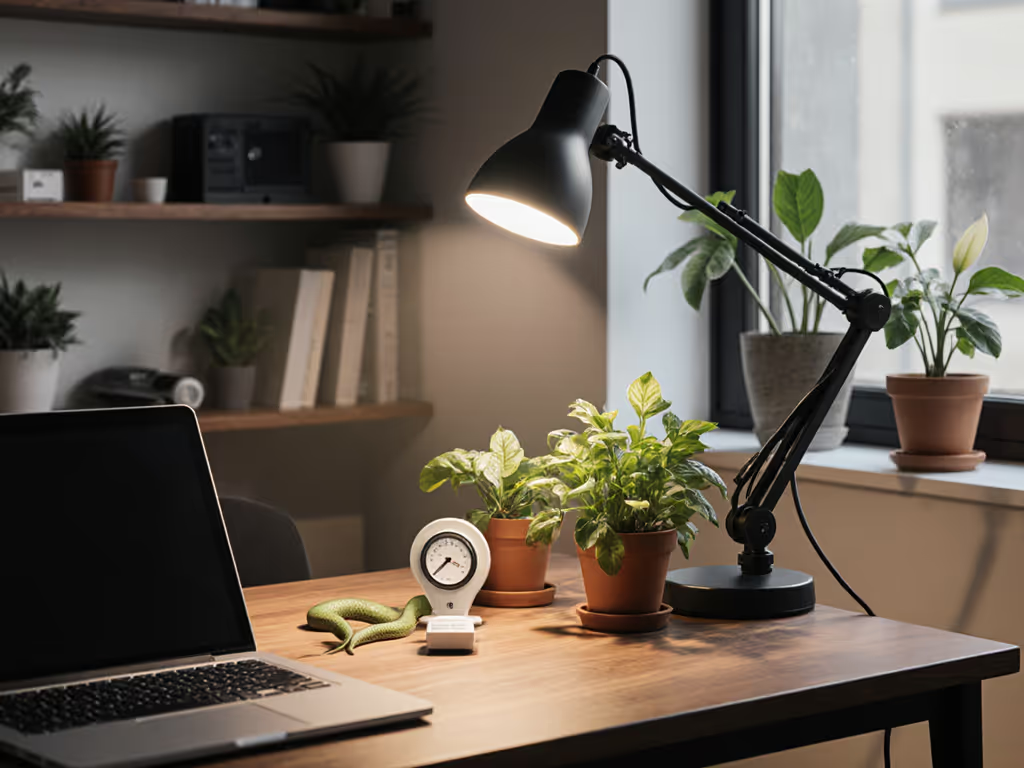
When you build a workspace with plants, your desk lighting needs to pull double duty: illuminating work tasks while keeping leafy companions thriving. Getting this plant-friendly desk lighting right means translating lab-grade metrics into simple decisions. Forget purple grow lights that strain your eyes (clarity beats complexity). Here’s how to map light requirements for both human focus and plant health without buying two separate systems. Start simple: map your workstyle, then dial lux and CCT.
Step 1: Map Your Desk (Measure Twice, Buy Once)
Map your desk, literally. Grab a tape measure and grid paper (like the one I taped to my sister's desk when she begged for "a lamp that won't hurt"). Note three zones: your keyboard/paper surface, monitor area, and plant locations. Measure distances between them. This reveals conflicts: Your pothos needs light, but its placement might cause glare on a glossy monitor.
Key data point: Office plants require at least 75 foot-candles (fc) of light (roughly 800 lux) to thrive, per Planterra's lighting guidelines. But human tasks need strategic variation: casual screen work at 300-500 lux, detailed drafting at 750-1,000+ lux.

Identify your natural light sources too. If your workspace has big windows, learn how to balance daylight with desk lighting to cut screen glare while keeping plants happy. South-facing windows provide 1,000-2,000 fc near the sill but drop to 50 fc just 10 feet away (Petitti Garden Centers data). If your snake plant sits in fluorescent office lighting (typically 40-60 fc), it's perpetually under-lit. Plants like aglaonema tolerate low light, but they will stretch and lose color without supplemental light. Measure your baseline lux with a free phone app like Lux Light Meter, then plan where artificial light must bridge gaps.
Step 2: Dial Human-Centric Lighting (Your Eyes First)
Prioritize human needs before adding plants. Plants adapt better to light variations than your eyes do. For screen work, target 300-500 lux at the work surface. For a science-backed walkthrough of placement and intensity, see our 500 lux optimization guide. If you are over 45 (or noticing eye fatigue), bump this to 750 lux. Presbyopia demands brighter light. Use warm-white light (2700K-3500K) for evening tasks to avoid sleep disruption, transitioning to cooler light (4000K-5000K) for morning focus.
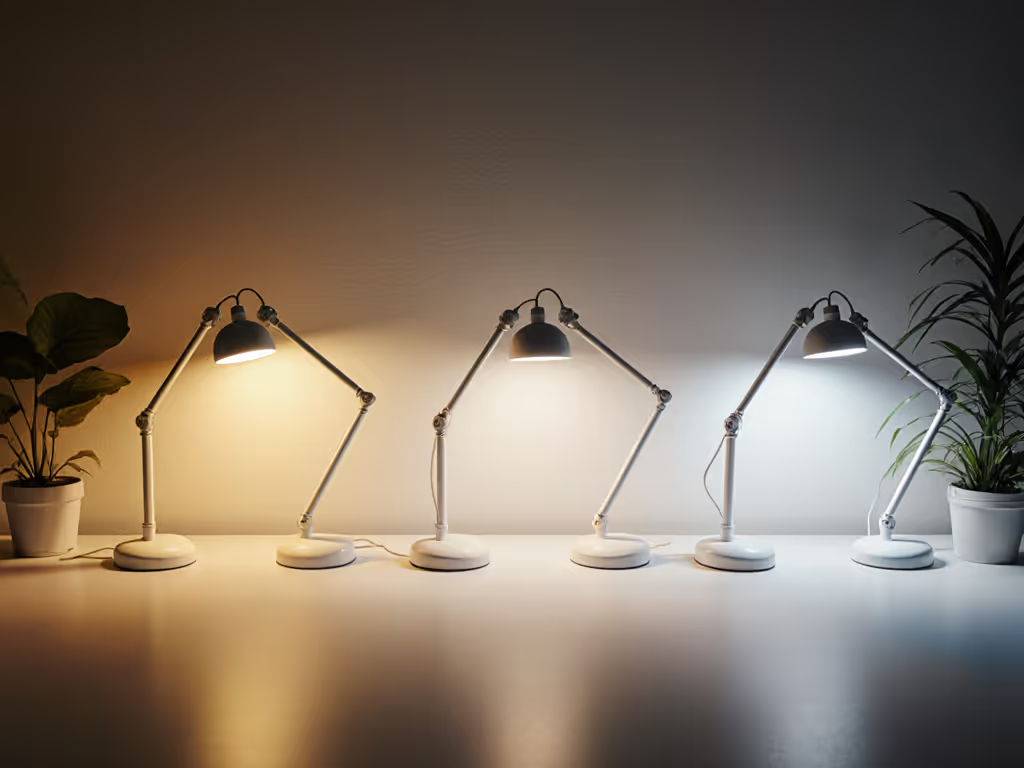
Crucially, beam shape matters more than wattage. Using two displays? Our dual monitor lighting guide shows how to prevent glare while maintaining even task light. A 500-lumen lamp with a narrow beam creates harsh glare; the same lumens with a wide, diffused beam (120°+) spreads light evenly. This is why my sister's winning lamp wasn't fancy, it dimmed low and eliminated hot spots. Prioritize lamps with:
- CRI 90+ (true color accuracy for editing or crafting)
- Zero-perceptible flicker (verified >3,000 Hz for video calls)
- Asymmetrical beams that light your desk without washing out monitors
Some models like the Honeywell H4 simplify this with auto-dimming sensors that maintain consistent lux as daylight fades, ideal for shared spaces where manual adjustments are not practical. But skip any lamp claiming "Plant Mode" without tunable CCT; fixed 6500K light gives you headaches while under-serving plants.
Step 3: Adjust for Plant Needs (The Science Made Simple)
Now layer in plant requirements. Most desk plants (pothos, peace lilies) need 12-16 hours of balanced full-spectrum light daily. Not just blue/red spikes from cheap grow lights. Forget PPFD jargon; translate it to lux your phone sensor understands:
- Seedlings/Sensitive Plants: 5,000-10,000 lux (20-30 cm from light)
- Mature Low-Light Plants (ZZ, Snake Plant): 10,000-20,000 lux (30-60 cm)
- Light-Hungry Plants (Ficus, Herbs): 20,000-50,000 lux (closest range)

Why balanced spectrum? Pure white light (4000K-5000K) contains enough red/blue wavelengths for photosynthesis while staying eye-friendly, no purple haze. JOMO Studio's research confirms that lights with 3000K + 6500K diodes (like dual-color grow bulbs) cover both human comfort and plant growth stages. Crucially, beam angle determines placement:
- Wider beams (120°+) work within 30-120 cm of plants (perfect for desktops)
- Narrower beams (60°) require 60 cm-2 m spacing (better for shelves)
Avoid heat buildup. LEDs stay cool, unlike halogens that desiccate soil. And always use timers: plants need 8 hours of darkness. Some lamps like the GLOWRIUM G2 Pro automate this with 3H/9H/16H cycles, but a $5 smart plug works too.
Step 4: Find the Sweet Spot (Your Balanced Workspace Lighting Formula)
Merge Steps 2 and 3 using this framework:
- Set your primary task lux (e.g., 500 lux for screen work)
- Layer plant lighting by positioning lights 30-60 cm above foliage
- Use warm-dim transitions: 3000K at 300 lux (evening), scaling to 4500K at 800 lux (daytime) For a detailed day-to-night plan, follow our circadian desk lamp schedule.
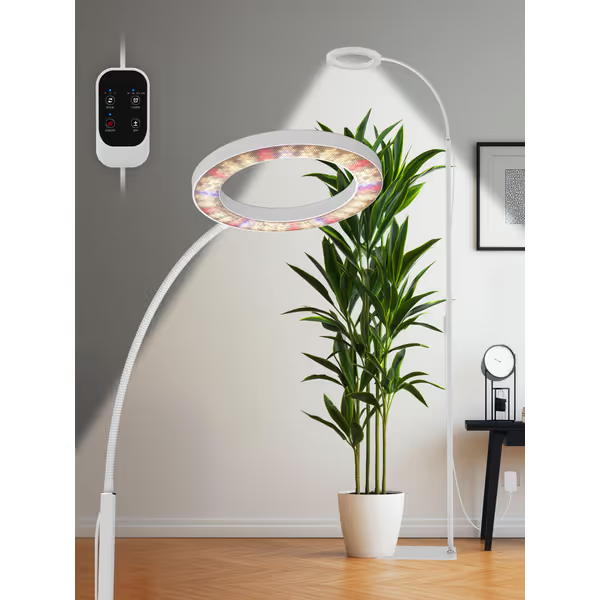
GLOWRIUM Grow Lights for Indoor Plants
This achieves balanced workspace lighting where your peace lily gets enough red/blue spectrum while your eyes stay comfortable. If your desk is cramped, prioritize flexibility: a 4-axis lamp arm (like the Honeywell's 180° tilt) lets you sweep light away from monitors during video calls and toward plants during lunch breaks.
For grow light integration without clutter:
- Plug a GE Grow LED bulb into your existing lamp (cheapest path)
- Choose fixtures with separate plant/human presets (e.g., 30% brightness for night plant care)
- Never place lights closer than 20 cm to plants. Watch for bleaching or stretching
Remember: uneven lighting causes both eye strain and leggy plants. If your aloe's leaves face one direction, your light source is too directional. Re-measure lux across your grid. You want ≤30% falloff from center to edge.
Grow Smarter, Not Harder
A plant-friendly desk lighting setup isn't about special gadgets; it is about intentional light mapping. When you align lux targets, beam angles, and color temperatures to both human physiology and plant biology, your desk becomes a productive oasis. No more choosing between comfort and greenery.
Try this tonight: Position one lamp for your keyboard (500 lux), then angle a second light toward your plants (20,000 lux). Notice how both your reading speed and your pothos' growth improve. For deeper science, explore Planterra's Lighting Guide. It breaks down FC requirements by plant type. Until then, remember my sister's lesson: simplicity wins. Map your desk.
Related Articles


Dual Monitor Lighting: Eliminate Glare & Eye Strain

Essential Office Lamp Add-Ons for Eye Strain
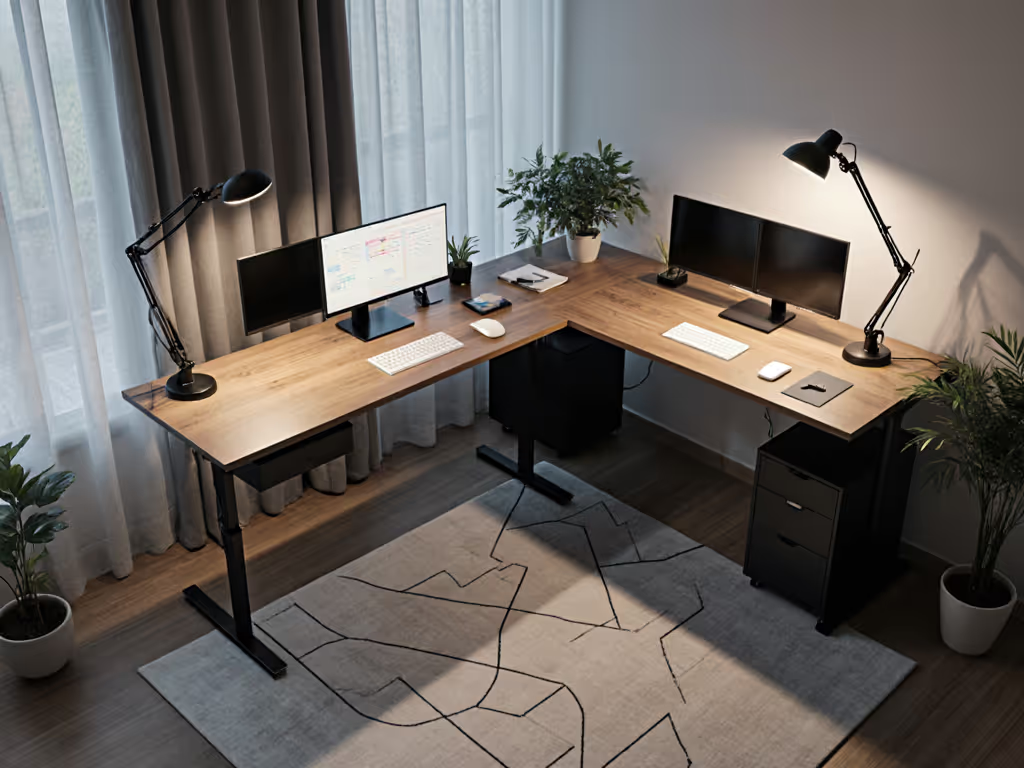
Desk Lamp Placement Guide: L-Shaped & Standing Desks
